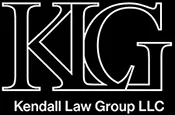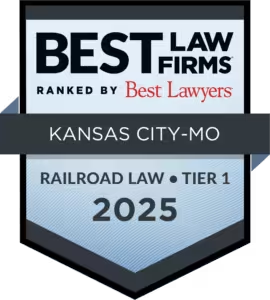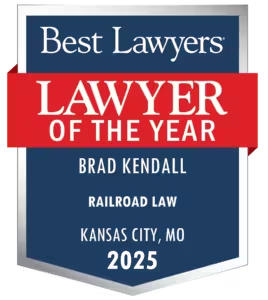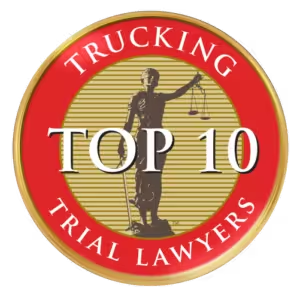
Uncontrolled Railroad Crossings Pose Dangers Across the US
A recent surge of rail accidents occurring at uncontrolled, rural railroad crossings across the United States has highlighted the dangers posed to motorists, pedestrians and railroad workers. Most recently, an Amtrak passenger train derailed in Mendon, Missouri on June 27, 2022. The passenger train which was carrying 275 passengers and 12 crew members collided with a dump truck at approximately 90 mph, resulting in four fatalities and hundreds of injuries.
The June 27th collision is under investigation by the National Transportation Safety Board (NTSB). A similar collision occurred the day prior in East Bay California, when another Amtrak train hit a vehicle at an uncontrolled crossing, killing three and critically wounding two others, including a child. On June 25th, two others were killed in Detroit in a suspected drag-racing incident. There have been six other incidents involving Amtrak trains since 2015. In 2021, three people were killed and many others were injured after a similar derailment in Montana.
According to local news outlets, Mendon residents and leaders have been pushing for changes to improve the safety at the crossing located at Porche Prairie Avenue for several years. Local residents have expressed concerns over the visibility of approaching trains due to brush overgrowth and a steep incline endangering the lives of motorists and farmers who frequently cross the tracks with heavy, slow-moving farm equipment and have demanded the railroad cut back brush, build up the road to lower the incline and install safety equipment.
Who is Responsible for Rail System Safety?
Most railroads are privately owned and publicly funded. The federal, state and local governments and private owners share the burden of maintaining and keeping railroad crossings safe. The U.S. Department of Transportation Act of 1966 created the Federal Railroad Administration (FRA), whose mission is to “enable the safe, reliable, and efficient movement of people and goods for a strong America, now and in the future.” The FRA conducts regulatory and inspection responsibilities through over 400 safety inspectors specializing in the compliance and enforcement of grade crossing, hazardous materials, motive power and equipment, operating practices, signals and controls, and track and provides railroad safety and stakeholder training, conducts accident employee fatality investigations, addresses systemic initiatives, and develops and enforces safety rules and standards.
The Missouri Department of Transportation (MoDOT) also embodies a Multimodal Operations Division-Railroad Division that administers highway-rail crossing safety improvement programs, employs rail safety inspectors to monitor railroad compliance with state and federal regulations and conducts safety education and outreach. The Missouri Highway-Railroad Safety Program aims to improve highway-rail grade crossing and is funded by a combination of state and federal funds.
Annually, Missouri receives $6 million in federal aid under the Federal Highway Administration’s (FHWA) Section 130 Program and an additional $1.2 million from Missouri’s Grade Crossing Safety Account, which is funded by a 25-cent assessment of motor vehicle registrations and renewals. The funds are only authorized for improving the safety at public crossings through the installation of flashing lights, gates/warning bells, pavement markers and closing of unsafe crossings. An annual review is conducted of each crossing, taking into consideration the amount of vehicle traffic, train and vehicle speeds at the crossing, sight distances and accident histories. The most dangerous crossings are selected for improvements.
What is Being Done About Unsafe Railroad Crossings?
Prior to the recent collision at the Porche Prairie crossing in Mendon, the railroad and the government knew the crossing was ultra-hazardous and knew it needed to have the highest level of protection, gates and lights. A State Freight & Rail Plan submitted to the Federal Railroad Administration in January by the Missouri Department of Transportation (MoDOT) included proposals for roadway improvements and the installation of lights and gates, with an estimated cost of $400,000.00. The federal government typically covers 80% of improvement charges, with 20% paid by the county. Spokespersons from MoDOT have expressed that with limited funds, it takes a long time for improvements to be prioritized. The project has been approved as part of a four-year plan running through fiscal year 2026. BNSF has refused to comment on specific issues surrounding the crash due to the open investigation but has made statements regarding its proactive vegetation management program.
Uncontrolled or “passive” crossings like the one involved in the recent crash in Mendon make up about half of the crossings throughout the U.S., with more than 130,000 passive crossings nationwide and 3,500 in Missouri. The NTSB has recommended closing passive crossings or adding safety alerts as well as technology to alert motorists of approaching trains on inclines. Passive crossings are much more dangerous than crossings with gates and lights because they do not inform motorists that a train is approaching the crossing. In order to avoid getting struck by a train at a passive crossing, motorists have to be able to see or hear the approaching train. Passive crossings with sight obstructions such as trees or vegetation are extremely dangerous and increase the likelihood of a collision.
How to Protect Yourself at Railroad Crossings
Trains do not operate on set schedules and potentially can be on any track at any time, traveling in either direction. The only options available to engineers approaching a crossing are to sound the warning horn and activate emergency brakes. Although emergency brakes will eventually stop the train, it is seldom in time to avoid a collision. The average freight train weighs between 12 and 20 million pounds and requires over a mile to come to a stop.
Since 2015 there have been over 2,000 train vs. car collisions in the U.S., resulting in more than 200 fatalities and thousands of serious injuries. Trains are often closer than they appear and travel faster than they appear to be when observed from a distance. For these reasons, motorists must remain visible and keep a safe distance from crossings, especially in areas with low visibility. The following are safety tips for navigating crossings:
- Never drive around lowered gates
- Never race a train to a crossing
- Avoid being trapped on a train track
- Get out of stalled vehicles and move to safety
- Always expect a second train
- Be aware that trains cannot make sudden stops
- Only cross at designated crossings
- Never walk around, under or behind lowered gates
- Never hunt or fish from railroad bridges or trestles
- Never attempt to hop aboard railroad equipment
- Do not walk through or around railroad property
- Do not cross immediately after a train
- Do not underestimate train speeds
Kansas City Train Accident Injury Trial Lawyers
Railroad accidents in Kansas City often result in catastrophic injuries and deaths. There are an alarming number of dangerous rail crossings throughout Kansas and Missouri. Despite motorist’s best efforts, train collisions still happen. Most are at passive crossings without gates and lights and that have trees or vegetation blocking the views down the tracks or have steep approaches.
The Kansas City Train Accident Lawyers at Kendall Law Group LLC have successfully litigated numerous train accident injury cases, earning record-breaking, multi-million-dollar settlements for our clients and their families. If you or your loved one has been seriously injured or killed in a Kansas City train accident, contact Kendall Law Group today to speak with a skilled attorney. You can reach us at (816) 531-3100 or sign up for a free consultation HERE.






